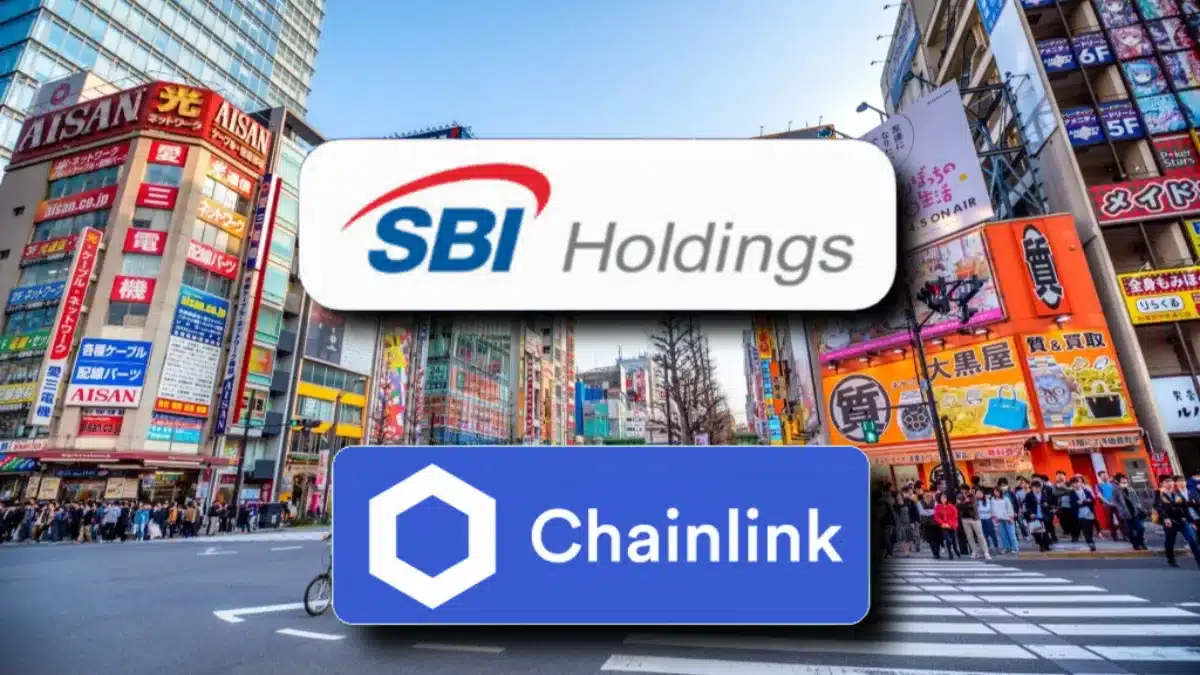Does SBI Group and Chainlink Partnership Threaten XRP? Here’s What You Need to Know
0
0

- SBI will use Chainlink tech for tokenized assets, stablecoins, and compliance infrastructure, while Ripple remains key for settlement.
- SBI continues to rely on XRP for cross-border liquidity, backed by regulatory approval in Japan and live remittance corridors.
- Chainlink handles data and interoperability, Ripple provides liquidity, and SBI integrates both into a multi-rail financial system.
SBI Holdings, the Tokyo-based financial conglomerate managing more than $200 billion in assets, has announced a new partnership with Chainlink, sparking debate across the crypto community about what this means for Ripple and XRP.
XRP pundit, Ripple Van Winkle (@RipBullWinkle), shared a post on X, explaining XRP’s role amid the new partnership, emphasizing that it doesn’t threaten Ripple’s standing; rather, it strengthens its role as liquidity provider.
The Chainlink deal focuses on building infrastructure around tokenized funds, real-world assets such as real estate and bonds, regulated stablecoins, and foreign exchange settlement through Payment vs. Payment (PvP) systems.
Chainlink’s technology will provide key components, including Cross-Chain Interoperability Protocol (enabling cross-chain messaging and connectivity), SmartData (NAV), and proof of reserve (ensuring on-chain transparency for audits and compliance).
Also Read: Gemini XRP Credit Card Finally Launches – Here’s What XRP Holders Stand to Benefit
Where Ripple Still Fits In
Van Winkle noted that SBI has long been Ripple’s strongest ally in Asia. Its subsidiary, SBI Remit, already uses XRP for live payment corridors connecting Japan to the Philippines, Vietnam, and Thailand. SBI VC Trade actively lists XRP, while SBI CEO Yoshitaka Kitao has publicly called XRP the “global standard.”
SBI just dropped a bombshell partnership with Chainlink.
Everyone’s asking: does this threaten Ripple + $XRP?
Here’s the breakdown
First, context:
SBI Group = Japan’s financial giantwith $200B+ in assets.
They’re Ripple’s #1 ally in Asia.
SBI Remit uses XRP in…
— Ripple Van Winkle | Crypto Researcher
(@RipBullWinkle) August 25, 2025
Chainlink’s role in the new deal revolves around control, data, and compliance, but not settlement. Unlike Ripple, Chainlink does not provide liquidity or the ability to move value across borders. Instead, it acts as a messaging and infrastructure layer.
Ripple and XRP remain central to SBI’s strategy by handling settlement and bridging currencies where tokenized cash is not available. XRP’s regulatory approval in Japan further strengthens its position as the liquidity engine of SBI’s ecosystem.
Complementary, Not Competitive
Far from signaling a shift away from Ripple, the partnership suggests SBI is hedging for a multi-rail financial future.
By integrating both Chainlink and Ripple, SBI is creating a stack that combines interoperability and liquidity, with Chainlink providing data, compliance, and messaging, and Ripple (XRP) providing a settlement layer (cross-border value transfer). Meanwhile, SBI positions itself as the integrator, building a multi-rail system.
Bottom Line
Rather than threatening Ripple, the SBI-Chainlink deal expands the rails for digital asset settlement. SBI appears to be betting on interoperability, with Chainlink providing infrastructure and Ripple delivering the liquidity muscle.
For XRP holders, the development reinforces the token’s role as a bridge currency in global finance, positioning it at the heart of SBI’s growing blockchain strategy.
Also Read: XRP Advocate Slams Ex-SEC Lawyer for Hiding Ripple Defeat in New Firm Bio
The post Does SBI Group and Chainlink Partnership Threaten XRP? Here’s What You Need to Know appeared first on 36Crypto.
0
0
 Manage all your crypto, NFT and DeFi from one place
Manage all your crypto, NFT and DeFi from one placeSecurely connect the portfolio you’re using to start.









